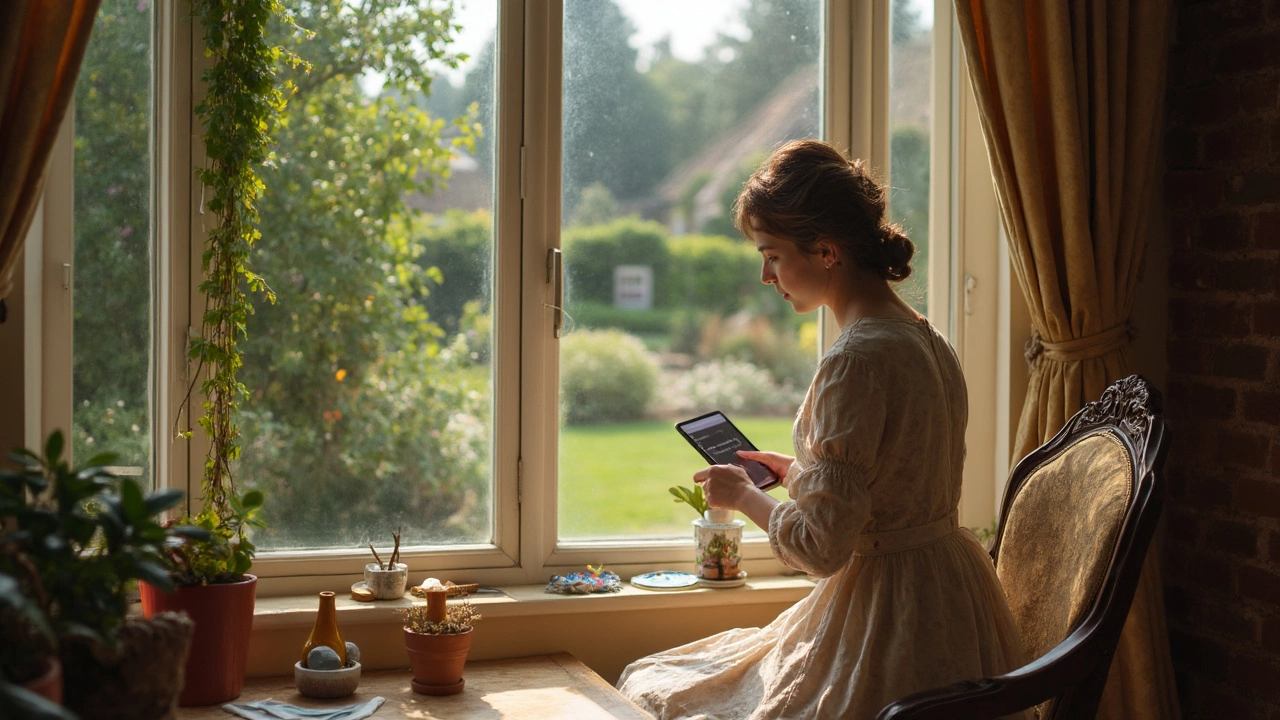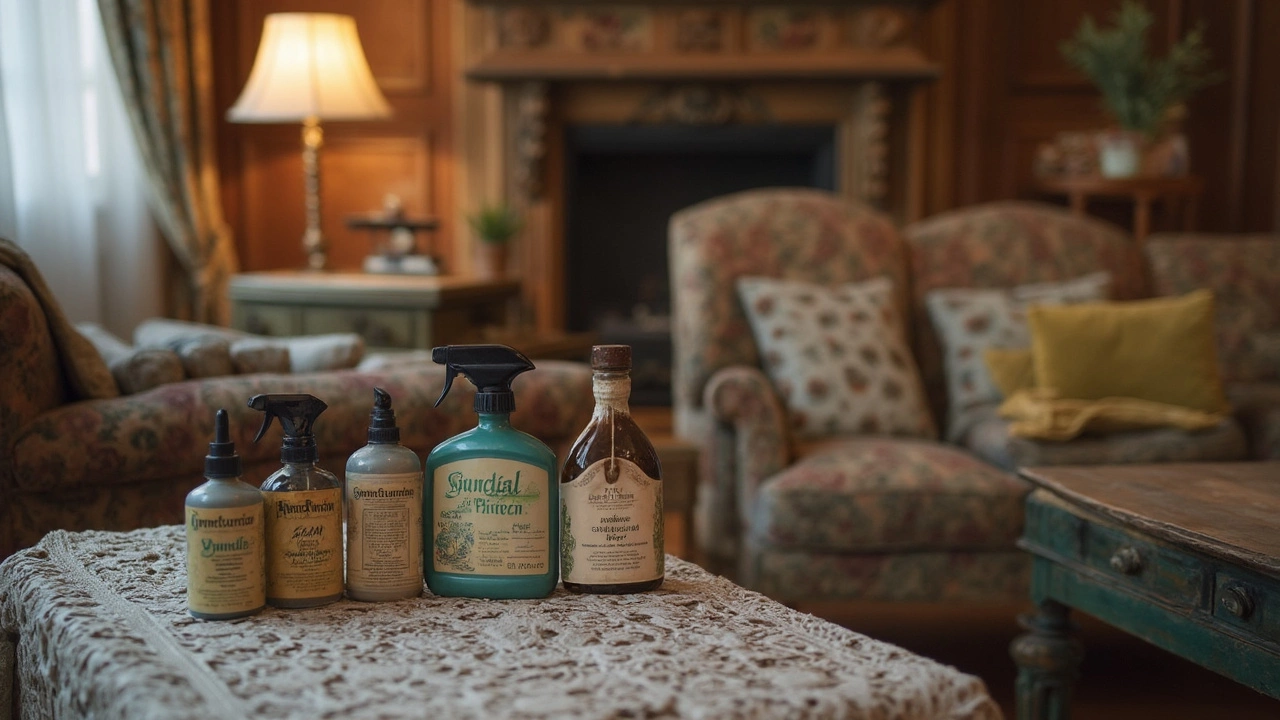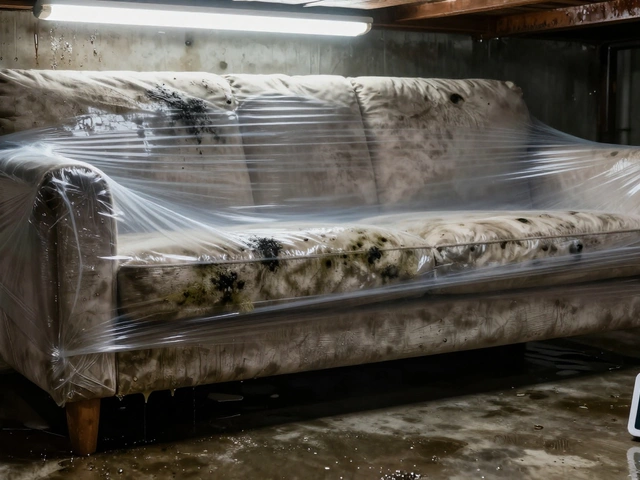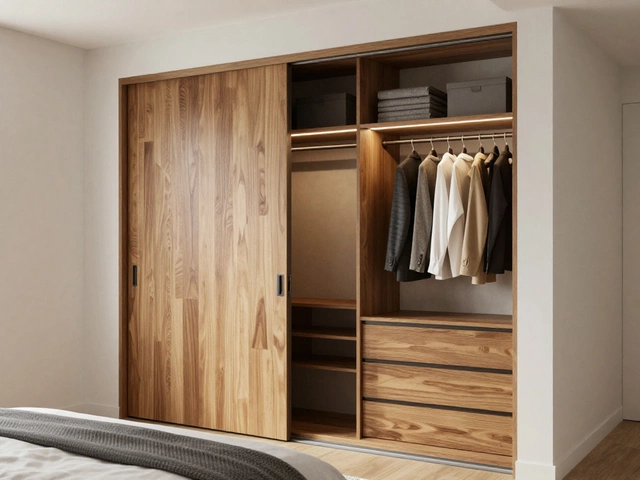Ever notice those unsightly dark spots or musty smell wafting about in the room? Could be mold or mildew making themselves at home on your furniture. These unwanted guests love damp and humid spots, which is pretty much everywhere when you least expect it. But fear not, there's a bunch of tricks up everyone's sleeve (or in their cleaning closet) to send them packing.
Before you break out every cleaning product in your cupboard, let’s talk mold's enemy number one: vinegar and baking soda. Yeah, that’s right – the same stuff you probably use to clean your kitchen and lift odors right out of your life. Mixing these can be a powerhouse, scrubbing away the filthy spots while being gentle on most surfaces.
But wait, before you grab that scrub brush, it’s crucial to understand why mold loves to party on furniture. Sometimes it's as simple as the furniture being packed too closely to walls or stuck in a poorly ventilated room. Knowing the enemy helps you fight smarter, not harder.
- Why Mold and Mildew Love Furniture
- Telltale Signs of Moldy Furniture
- DIY Cleaning Solutions That Work
- Preventive Measures for Protecting Your Stuff
- Choosing the Right Products for the Fight
- When It's Time to Call in the Pros
Why Mold and Mildew Love Furniture
So, why exactly does mold find your cozy couch or vintage wardrobe so irresistible? It’s no mystery – mold and mildew are all about humidity and moisture. These sneaky fungi thrive in conditions where there’s about 70% humidity or more. Toss in a little warmth, preferably between 77°F and 86°F, and you've got yourself a mold party.
Furniture acts like a sponge, especially if made of porous materials like wood, fabric, or leather. Ever notice how spilling water on a wooden table gets absorbed if you don't wipe it up fast? That's the kind of environment mold loves. It provides perfect hideouts in nooks, crannies, and even inside fibers, where moisture can sneak in unnoticed.
To make things worse, poorly ventilated spaces encourage moisture buildup. When air circulation is bad, surfaces like furniture can't breathe, trapping moisture and creating a breeding ground for mold. Stack furniture against a wall where air can barely circulate, and you're just increasing the odds.
Here’s something to chew on: The Environmental Protection Agency (EPA) mentions that indoor relative humidity should ideally be kept below 60% – even better if you manage to drop it to about 30-50%. Mildew on furniture is far less likely when you keep a handle on these numbers.
In the grand scheme, understanding these conditions not only helps you handle mold if it arises but also equips you with the know-how to take preventive measures. Keep things ventilated, and manage humidity, and you're a step ahead in protecting that cherished armchair or family heirloom.
Telltale Signs of Moldy Furniture
So, you think your favorite armchair might not have just bad vibes but actual mold and mildew? Time to play detective! The first dead giveaway is often an unwelcome musty odor. If your nose crinkles every time you sit down, it's a sign that mold might be lurking.
Next, give your furniture a good look under bright lighting. Mold isn't shy about leaving its mark—look for spots or discoloration, like green, black, or even white fuzzy patches. These are the notorious calling cards of mold and mildew on furniture.
Feel around; is the surface damp or sticky in spots despite your cleaning efforts? Don’t ignore it—that traitorous moisture is like a buffet line for mildew. And check fabric and cushions. If they feel clammy after a rainy day, trouble might be brewing inside.
Another clue comes in the form of allergic reactions. If you or your family members are suddenly sneezing, coughing, or getting itchy eyes whenever near a certain piece of furniture, your body might be throwing up a red flag about the presence of mold.
Lastly, sometimes we need a little extra help to truly know what's what. Consider picking up a home mold testing kit. They're simple to use, usually involving swabbing the suspicious area and sending it to a lab. If you're the DIY type, it can provide peace of mind before calling in pros.
DIY Cleaning Solutions That Work
Got mold and mildew on furniture? No need for pricey products when household items can do the trick. First up, let’s use a simple yet effective combination—vinegar and baking soda. Sounds too easy, right? But this duo is known for its mold-busting prowess.
Start by gathering some supplies: a spray bottle, white vinegar, baking soda, a soft brush, and a cloth. Here's what you need to do:
- Pour white vinegar into a spray bottle, spray directly on the moldy spots, and let it sit for about an hour. Vinegar's acidic nature makes it a natural mold removal agent.
- After that hour, sprinkle a bit of baking soda over the vinegar-soaked area. You'll notice some fizzing action – that's the magic happening!
- Use a soft brush to gently scrub the area. This helps lift the mold without damaging delicate surfaces.
- Wipe down with a damp cloth to remove any residue, and make sure to dry thoroughly. Mold loves moisture, so eliminating it is key.
For a bonus tip, tea tree oil is another superhero in the fight against mildew on furniture. Mix a teaspoon of this oil with a cup of water and spray it over problem areas. Not only does it work wonders, but it also leaves a pleasant scent.
If you’re dealing with fabric furniture, like couches or cushions, you might want to try the same vinegar approach but use a fabric-safe method. Dampen a cloth with vinegar, dab it onto the fabric, let it dry, and then vacuum it to lift off any powdery residue.
By sticking to these DIY cleaning solutions, you’ll not only save cash but also keep your home free from harsh chemicals. Want to protect your furniture even better? Regularly dust, air out, and rearrange pieces to promote airflow. Keeping your environment less inviting to mold spares you future battles.

Preventive Measures for Protecting Your Stuff
Alright, let's get real about keeping your furniture safe from the dreaded mold and mildew. The best strategy? Keeping those conditions mold and mildew love at bay. Here's how to do just that.
First things first, control the humidity. Mold adores damp places, so aim to keep indoor humidity levels under 60%. You can easily keep track of this by using a hygrometer, which is a handy little device available at most hardware stores.
- Ventilation is key: Open a window or use exhaust fans, especially in areas like bathrooms and kitchens where moisture levels tend to skyrocket. Got an attic or basement? A good air circulation system there can do wonders for keeping those spaces dry.
- Proper furniture placement: Ensure that your furniture isn't pushed right up against walls. Leave a bit of space to let that air move around and prevent moisture from getting trapped. It might not seem like much, but a small gap can make a big difference.
- Invest in a dehumidifier: If you live in a particularly humid area, a dehumidifier might become your new best friend. It helps pull excess moisture out of the air, making your home less appealing to mold and mildew.
- Regular cleaning: Might sound like a no-brainer, but giving your furniture a regular dust and wipe-down can keep spores from settling in. Use a vacuum with a HEPA filter to catch those tiny particles like a boss.
- Watch for leaks: Be vigilant about checking for leaks in pipes, around windows, or in the roof. Moisture from leaks creates an inviting playground for mold and once it starts, it can spread quickly.
If you're looking to take it a step further, you might consider applying a mold-resistant paint or sealer on surfaces prone to dampness. These act like a protective barrier that mold has a hard time penetrating, particularly in basements or bathrooms.
When all these steps are combined, you're setting yourself up for success in the fight against mold and mildew on furniture. Keeping moisture in check not only protects your furniture but also ensures a healthier living environment.
Choosing the Right Products for the Fight
Alright, let's face it, when battling mold removal and mildew on our furniture, our cleaning arsenal is crucial. You don't need to buy every cleaning product on the supermarket shelf, but choosing the right ones can make a world of difference.
First up, consider the ever-reliable white vinegar. It's a powerhouse with a knack for killing up to 82% of mold species. Just spray some directly on the affected area, let it sit for an hour, then wipe it clean. The smell might be strong at first, but it fades pretty quickly.
If you're looking for something a bit tougher, try hydrogen peroxide. It's great for hard surfaces and works well against pesky spores. Just apply it with a spray bottle, let it bubble for around 10 minutes, then scrub it away.
What's that? Worried about your wood? No need! Tea tree oil is your go-to. Mix a few teaspoons with water in a spray bottle, spritz it over the mold, and leave it be. It's safe for wood furniture and doesn’t harm the finish.
- Mildew on furniture often requires less moisture, so desiccants like silica gel pack a punch to prevent it.
- Borax can be your secret weapon when you want to amp it up. Mix it with water, scrub it in, and don’t rinse. It leaves a protective barrier that dodges future infestations.
Remember, any time you use chemical-based cleaning agents, it's smart to test them on a small, hidden area first. This way, you know whether your furniture's surface is up for the fight without causing extra damage.
Lastly, thinking long-term protection? Consider investing in dehumidifiers. Keeping the right humidity level in your home (ideally between 30-50%) is a key prevention strategy. This helps combat mold and mildew which are such humidity lovers.
When It's Time to Call in the Pros
Sure, tackling mold removal and cleaning up mildew on furniture yourself can be a weekend project, but sometimes, it’s not enough. Got a mold patch that keeps coming back? Here’s when you might want to hand over the reins to someone who knows the ropes.
First off, consider the size and spread of the problem. If mold has taken up residence on a large portion of your furniture or if you've tried cleaning it several times with no luck, you probably need a professional. These folks come packed with special equipment and solutions that get the job done without damaging your beloved couch or table.
Another sign it’s time to bring in the experts? If you spot black mold or anyone in the house experiences symptoms like sneezing, coughing, or skin irritation. These could point to more serious mold varieties that require expert handling.
Budget-wise, maybe you’re thinking it's expensive, but think about this: dealing with extensive mold damage could cost even more down the line. Professional cleaners might use technology like moisture meters or infrared cameras to spot hidden moisture sources, safeguarding the rest of your home.
| Situation | Professional Services |
|---|---|
| Reoccurring mold spots | Advanced treatment and identification of moisture sources |
| Health symptoms | Thorough mold testing and air quality checks |
| Large affected areas | Comprehensive cleaning and prevention strategies |
Don't stress about picking up the phone. Mold remediation experts are not just about getting rid of it; they’ll offer advice on preventing future invasions, making this a one-time thing. So, weigh your options when stubborn mold and mildew just won't quit.




